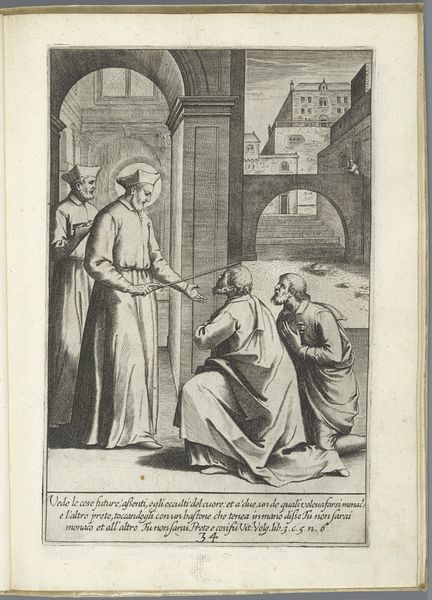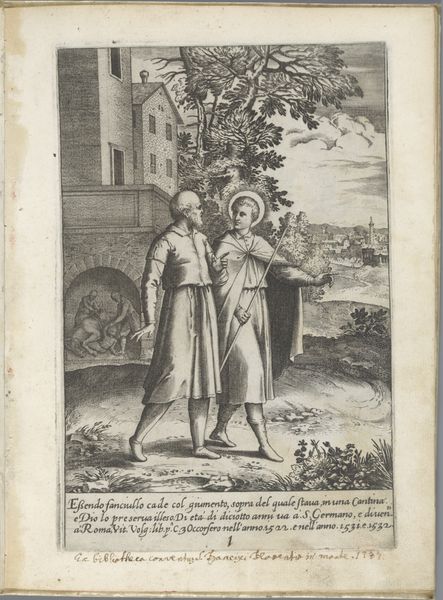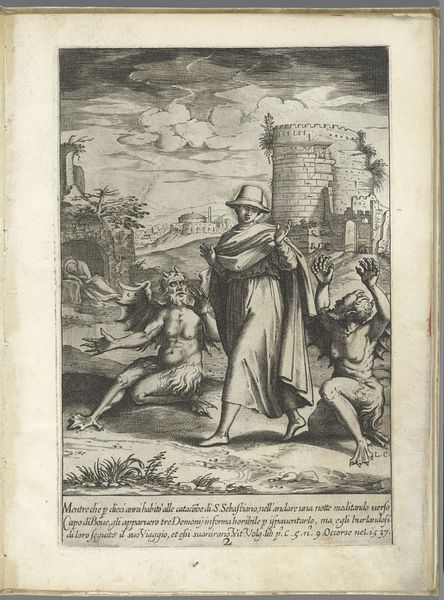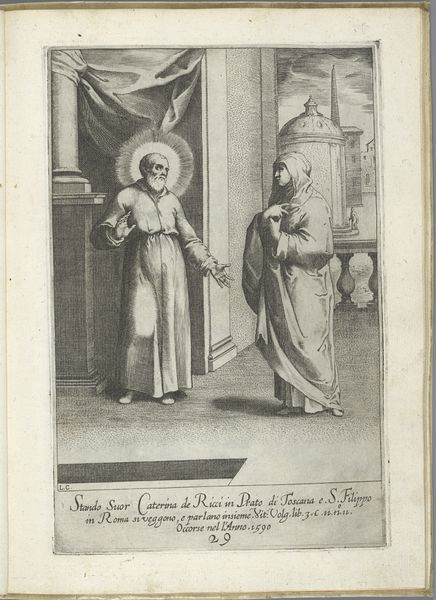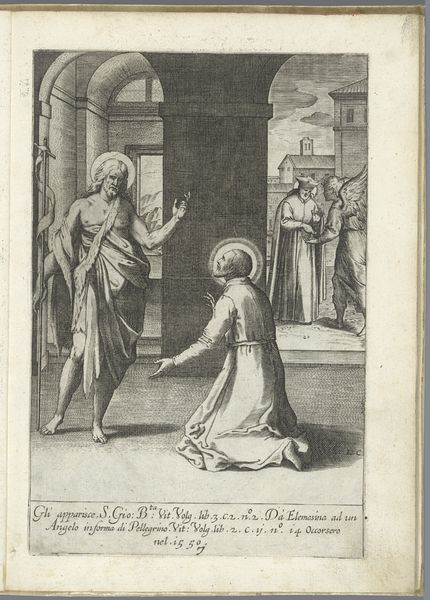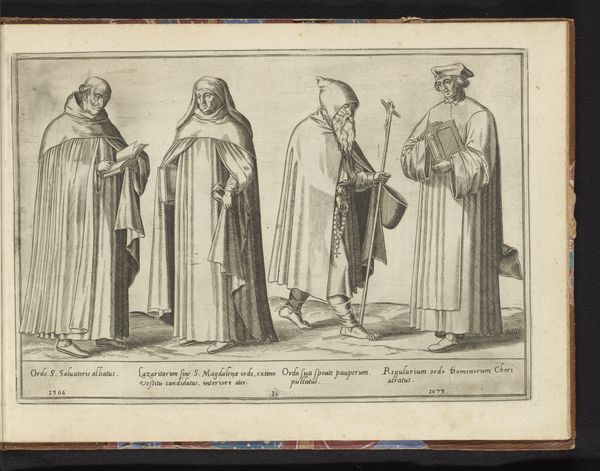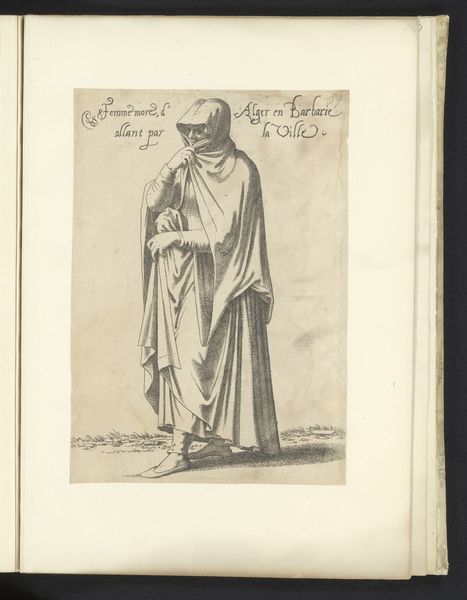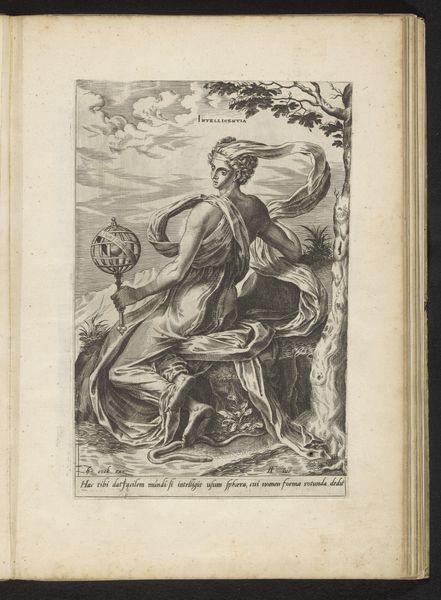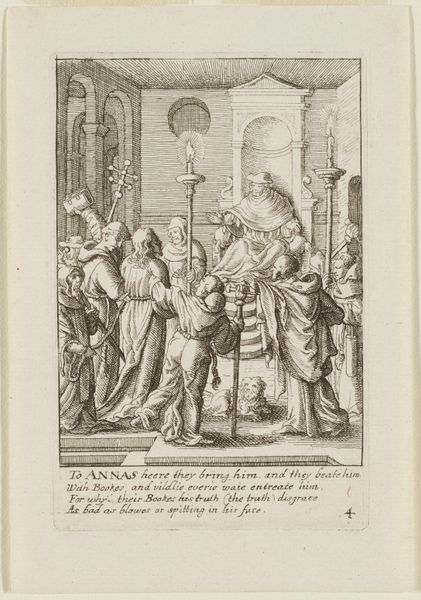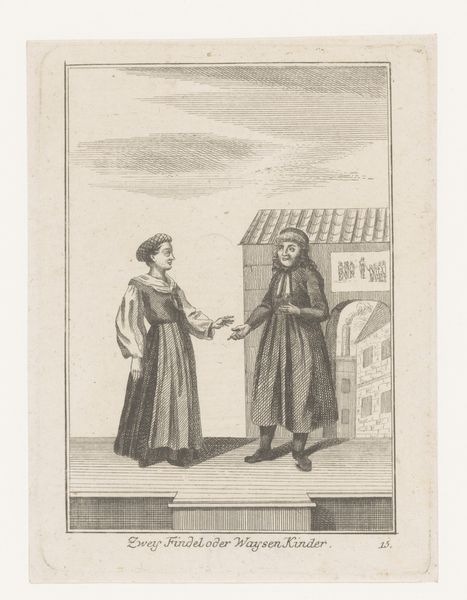
print, engraving
#
baroque
# print
#
history-painting
#
engraving
Dimensions: height 228 mm, width 150 mm
Copyright: Rijks Museum: Open Domain
Curator: This engraving by Luca Ciamberlano, dating from 1630 to 1641, is titled "Filippo Neri moet in Rome blijven," or "Filippo Neri must stay in Rome." It's part of the Rijksmuseum's collection. Editor: The tonal range creates a very solemn atmosphere. I’m immediately drawn to the figure on the left, emanating a divine presence amidst earthly duties. Curator: Indeed. This work situates us within a specific moment in the Counter-Reformation, specifically highlighting Filippo Neri's role and position within religious expansion efforts in Rome. The engraving portrays Saint Filippo Neri with another monastic figure, referencing the claim by Agostino Ghettini, a monk, who indicated that John the Evangelist requested to him that the expansion efforts of India were needed more so in Rome. Editor: It’s intriguing how Ciamberlano uses symbolic language. A building rises behind Filippo. Why does he loom so large? Also, a angel is above people. Curator: Well, the angel holding an individual has historical context. This reflects the iconography around John the Evangelist, and here the engraver likely chose it to reinforce the idea of evangelization and the call to missionary work. The city rises on the hill behind him to reinforce this point. Editor: It seems interesting, though, to include a halo-ed saint talking to a more earthbound monk. It seems a little heavy-handed in trying to impress on the audience that this revelation is legitimate. The artist could have made the statement of authority differently. Curator: However, by situating them so prominently, side-by-side, but at the precipice of buildings, there's an indication of balance and direction that they can take as both parties understand the implication. Perhaps Ciamberlano challenges the concept of religious order with a statement of individual experience. Editor: Interesting take. Thinking about this symbolically reveals just how much of religious narratives depend on shared visual culture to lend legitimacy and impact. Curator: Agreed, the impact of these types of cultural references can speak to different levels of commitment in how it can play with individual understandings of cultural narratives. Editor: Yes, by considering the socio-political contexts, we expose the intersection of historical movements on cultural memory.
Comments
No comments
Be the first to comment and join the conversation on the ultimate creative platform.
